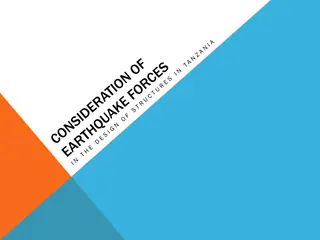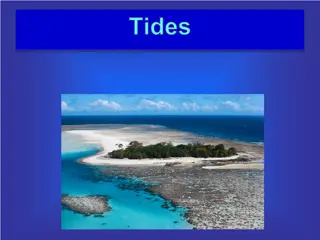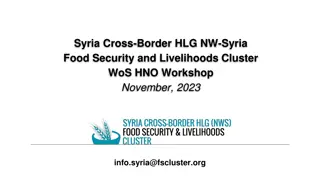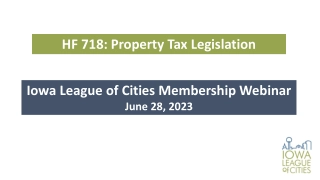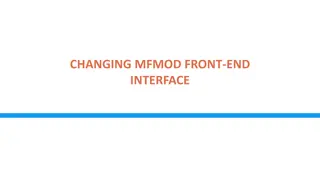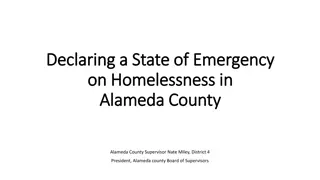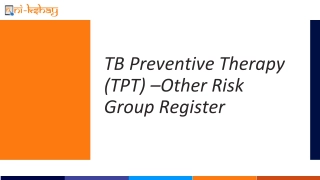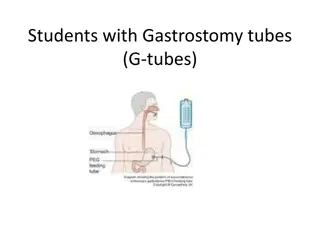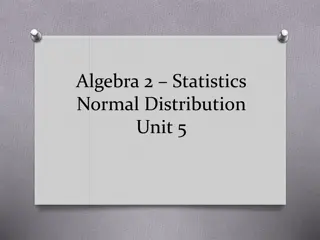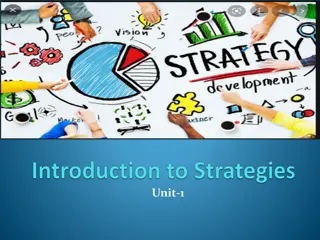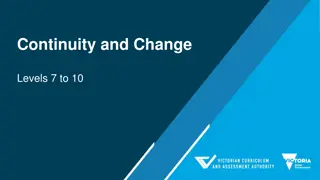Understanding Tides and Earthquake Triggers
Spring tides occur when the moon is new or full, resulting in higher high tides and lower low tides. Neap tides follow, with moderate tides. Tides can trigger earthquakes due to stress and tidal components like normal and shear stresses. Statistical tests analyze the tidal phase angles at the time of earthquakes to study this relation.
Download Presentation
Please find below an Image/Link to download the presentation.
The content on the website is provided AS IS for your information and personal use only. It may not be sold, licensed, or shared on other websites without obtaining consent from the author. Download presentation by click this link. If you encounter any issues during the download, it is possible that the publisher has removed the file from their server.
Presentation Transcript
Spring tidesThe moon appears new (dark) when it is directly between the Earth and the sun. The moon appears full when the Earth is between the moon and the sun. In both cases, the gravitational pull of the sun is "added" to the gravitational pull of the moon on Earth, causing the oceans to bulge a bit more than usual. This means that high tides are a little higher and low tides are a little lower than average. Seven days after a spring tide, the sun and moon are at right angles to each other. When this happens, the bulge of the ocean caused by the sun partially cancels out the bulge of the ocean caused by the moon. This produces moderate tides known as neap tides, meaning that high tides are a little lower and low tides are a little higher than average. Neap tides occur during the first and third quarter moon, when the moon appears "half full." 2
Evidence for tidal triggering of earthquakes as revealed from statistical analysis of global data Tanaka, S., M. Ohtake, and H. Sato 3
Earth tide: The direct term that is produced by the traction force of the Moon and the Sun; The indirect term that is produced by the ocean tide. What control earthquakes? Stress and relation between the stress and tidal components. The most important tidal components to affect the fault rupture: the normal stress and the shear stress on the fault plane. J1: trace of stress tensor which represents confining stress and is invariant with coordinate rotation. Data: 9350 globally distributed earthquakes from 1977 to 2000 with magnitude 5.5 or larger from the Harvard centroid moment tensor catalog. 4
Method of statistical test: assign the tidal phase angle at the occurrence time of each earthquake; Schuster s test Probability of random distribution: the smaller the p value is, the higher the confidence in rejecting the null hypothesis is. 5% 5
Results: The sinusoidal curve shows the least squares fitting of to the frequency distribution. 1. 1.1 6
2.Fault types: reverse, normal, strike-slip and oblique-slip faults. 7
4. magnitude: 5.5??6.4, 6.0??6.9, 6.5??7.4, 7.0??7.9 12
EARTH TIDES AS A TRIGGERING MECHANISM FOR EARTHQUAKES BY L. KNOPOFF December, 1964 14
Earth tides: the tide-producing force has a spectrum which has a population in a large number of lines. The correlation is in real-time instead of a harmonic analysis. No attempt has been made to classify any further the earthquake sequence as to geologic subprovince or as to occurrence on specific earthquake faults. Data: 8614 events from 1934 to 1946. Events location: 32.5 to 36N, 115 to 120W. 15
1. Method: Gravitational attraction of sun and moon: calculate hourly for 24 years. Correlation with tidal acceleration: Interpolation procedure calculate times of maxima and minima; The time interval between a maximum and minimum was divided into one hundred parts. Result: The irregular character may be due to the fact that an extremely fine subdivision of the time interval between extrema was used; Smoothing of the histogram: itself Fourier analyzed; It may be that earthquakes have a greater tendency to be triggered when the tidal strain differences are large. 16
2. Earthquake events are presented as function below: Cross-correlation: EQ is the result of this calculation; R1: Gaussian distribution; R2: adding a random time to the actual time sequence. Conclusion: The largest possible triggering mechanism in the earth, namely that of oscillatory tidal strains, has no detectable influence upon the times of occurrence of small earthquake~ in Southern California 17
EARTH TIDES AS A TRIGGERING MECHANISM FOR EARTHQUAKES John F. SIMPSON 6 July 1967 18
Previous study: small or localized samples for statistical treatment. Data: 22561 earthquakes occurring from 1 January 1950 to 30 June 1963. Magnitude: 5.5 or larger. Program: Remove redundant records; Compute ephemerides of the sun and moon; Calculate frequency distributions of earthquakes as a function of certain parameters. 19
Conclusion: On the basis of the congruence of the actual distributions and the theoretical random distributions shown in figs. 3-11, it is concluded that earthquakes are not triggered by specific amplitudes of acceleration of earth tide component forces. Further investigations should be made of the effects of: oceanic tidal loading, because most quakes occur in coastal or oceanic areas; atmospheric loading, including tidal effects as well as transient barometric pressure effects; and azimuths of the tidal forces with respect to orientations of the faults responsible for the quakes. 25


